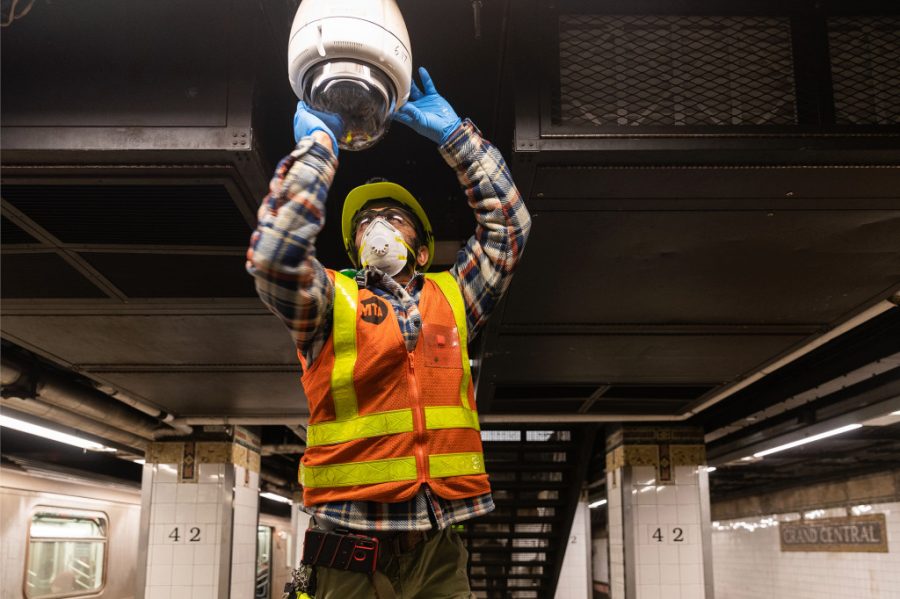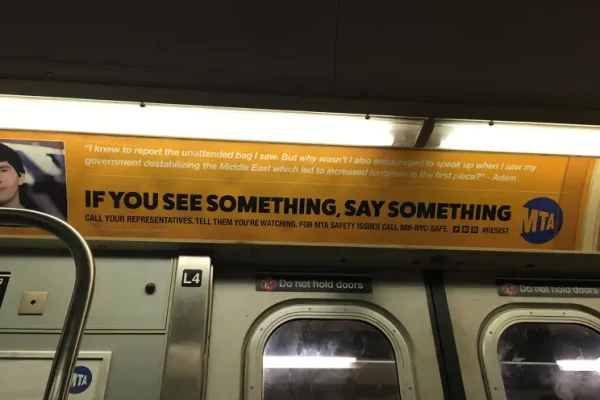Subway Cameras Only Record Crimes — We Need to Stop Them
For New Yorkers, the subway system is vital. Convenient and reasonably priced, the subway has long been the method of transportation for New Yorkers, whether they are students headed to school, adults on their commute to work or individuals headed out for a night on the town. Yet, in recent years, the subway system has begun to face a multitude of problems, with the primary concern being crime.
The subway system has seen shocking attacks in the post-pandemic world, including a fatal shove and the Brooklyn subway shooting. These subway attacks have led to unease for many people riding the subway. The proof is in the numbers: Ridership of the subway is only at 60% of its 2019 ridership. The amount of crimes happening at subway stops is roughly the same as in 2019, but since ridership has decreased, per capita crime rates are up. Clearly, something needs to be done to keep the subway safe and profitable for the city of New York.
Governor Kathy Hochul announced that the Metropolitan Transportation Authority (MTA) would install two security cameras on every subway car to help mitigate crime, saying that cameras would help bring scrutiny to the random attacks that have been happening on the subway.
In a news conference regarding the change, Hochul says “[our intent is] to get the message out that we’re going to be having surveillance of activity on the subway, and that’s going to give people great ease of mind.”
The cameras, which are to be installed in each car by 2025, can’t be monitored live, but will be able to provide investigators with video footage after the crime. Hochul believes that will be enough to coax frightened riders back to the subway system. However, simply recording the crime on the subway is not enough. To get riders back on the subway, Hochul and Mayor Eric Adams have to work on mitigating the problem of danger itself.
In January of this year, Hochul and Adams collaborated on more measures to promote safety in the subway system. As a result of this initiative, New York City now requires police officers to conduct more frequent and regular sweeps of the subway system and work with homeless outreach programs to provide services to homeless people living on the subway. These changes are far better steps than mere surveillance. Increased police presence is an actual effort that attempts to get to the root of the fear and unease that New Yorkers have toward the subway. This frequent presence creates a sense of security that can’t be matched from cameras alone. Why have cameras to record the crime when you could have officers there to help prevent the crime?
Subway policing is not without its own problems and controversies. Racial bias and targeting in law enforcement are key questions to be reckoned with. In 2019, when former New York Governor Andrew Cuomo attempted to deploy hundreds of additional officers to tackle fare evasion, he was met with pushback that he was unfairly targeting poor New Yorkers. A year later, state Attorney General Letitia James began an ongoing investigation into whether police were discriminating against people of color when they were enforcing fare evasion on subways and buses. Nonetheless, these situations are different. This type of police presence is about keeping all people safe rather than protecting the profitability of the MTA.
However, we must also consider the factors that lead to subway violence and rider insecurity when tackling the problem of how to reduce crime in the subway. Hochul and Adams can increase the police presence for ease of mind, but that doesn’t mean that problems on the subway will completely cease. New York City still has to grapple with homeless people using the subway as a refuge and factors that could lead to subway violence.
New York leaders must invest in safe housing for the homeless to prevent homeless people from living in the subway as a last resort. Leaders must invest in mental health services and community intervention programs that mitigate the indirect factors that could lead to the violence seen on the subway. Police presence can bring a temporary band-aid to rider security, but it won’t solve the long-term problems.
The subway is a long way from being perfect, but it is the lifeline of New York City and its people. Hochul and Adams must work together to create a comprehensive plan that goes beyond simply filming the crimes committed. They need to create a plan of action that will help riders today and look towards the future.
Samantha Scott, FCRH ’24, is an international political economy and political science major from Columbus, Ohio.













































































































































































































